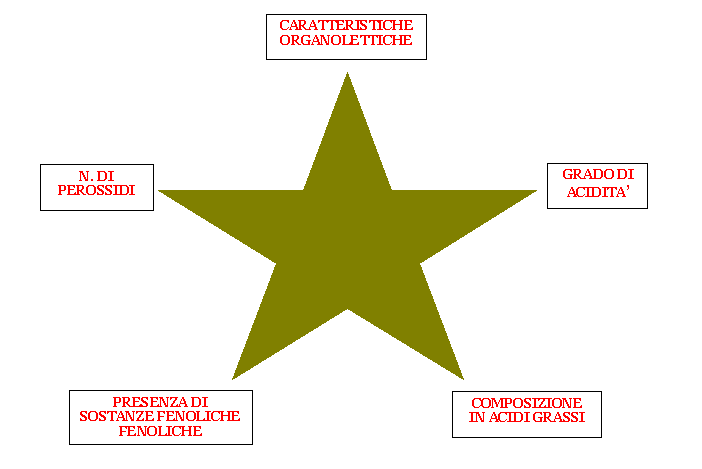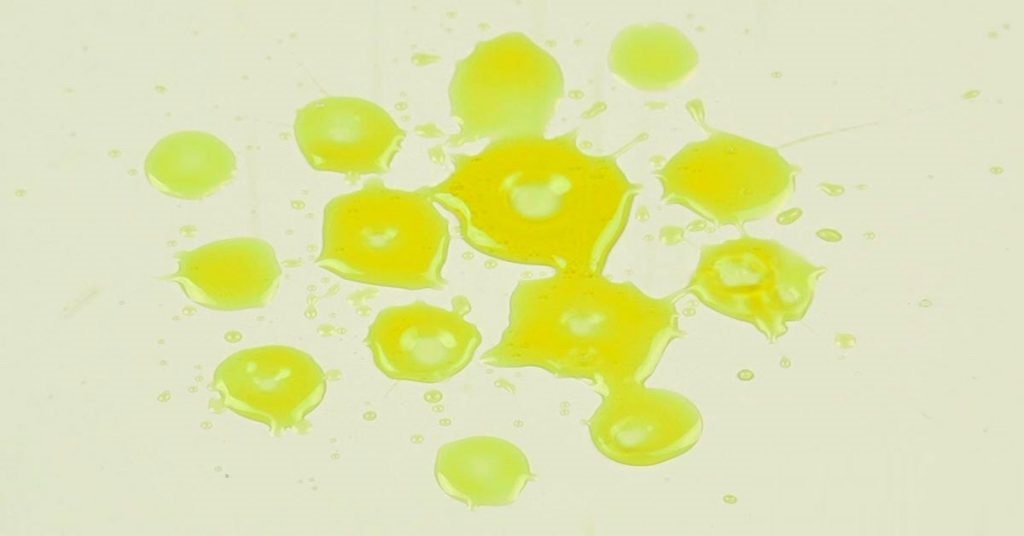Identifying the objective quality of an extra virgin olive oil is possible thanks to some parameters that allow us to establish the real value of the product.
Here is our personal graphic representation of the qualitative parameters of an olive oil.


The organoleptic characteristics are the set of physical and chemical characteristics of the oil perceived by the sense organs: taste, smell and sight. These sensations in the olive oil can be positive or negative. Among the positive aspects, the fruity, bitter and spicy are absolutely to be found. While among the negative ones the most important are rancid, reheating, mold, sludge.
The degree of acidity (% free oleic acid) is the part of fatty acids that in an olive oil remains in its free state, that is, not bound to glycerin. In the olive oil for a small percentage these fatty acids are in a free state in a natural way, but for another part the breaking of the bond is caused by external factors: when the olives tear (such as for the presence of insects, for the collection carried out in bulk, for the massed transport or storage of the fruit for many days before milling), the bond between glycerin and fatty acid is broken due to an enzyme (lipase) present in the olives. All that increases the level of acidity of the olive oil which consequently loses quality. In an extra virgin olive oil, the acidity must not exceed 0.8%, as higher levels of acidity make the oil difficult to digest. Levels below 0.4% make the product excellent.
The Peroxides are substances that oxidize the fatty acids bound to glycerin due to the action of an enzyme called lipoxidase. The known free radicals arise from this oxidation process and perform an extremely harmful action on the human body. In order this primary oxidation to be activated, the olives must be damaged and the oil must come into contact with the oxygen in the air. This oxidative process in presence of a little quantity oxygen is very slow, in the absence of oxygen it stops. In virgin and in extra virgin olive oils the number of peroxides must not exceed 20 m. eq./Kg.

The Phenolic substances are substances capable of delaying or preventing oxidation of the oil. Antioxidants counteract the peroxidative processes that result to the formation of the free radicals. It is these substances that give the olive oil the bitter and spicy sensations. The rich antioxidant heritage of the oil is due to the fact that the olive, being a fruit for many hours in contact to the action of air and light, must defend itself from oxygen by synthesizing a greater quantity of antioxidant substances which are then transferred in the oil. They are present in the minor constituents of olive oil, in particular in the polyphenols that, thanks to their antioxidant activity, to prevent cardiovascular diseases, inflammation, cancer.
The fatty acids present in our body derive in part from daily nutrition and in part are synthesized by the human body. Vegetable fats present in foods (fruits and seeds) are mainly made up of unsaturated fatty acids which by their nature help to thin the blood. Their consumption positively helps to counterbalance the significant presence in human tissue of saturated fatty acids which, unlike the unsaturated ones, have negative effects since they make the blood thicker. Moreover, among all vegetable fats, the superiority of olive oil lies in the fact that it contains a relevant the presence of monounsaturated fatty acids (with only one double bond) which are not very susceptible to the oxidative process and which do not require any antioxidant protection. In the seeds oil instead polyunsaturated fatty acids are present in large quantities which, being susceptible to oxidation, contribute to the formation of free radicals and have negative effects on the organism.
